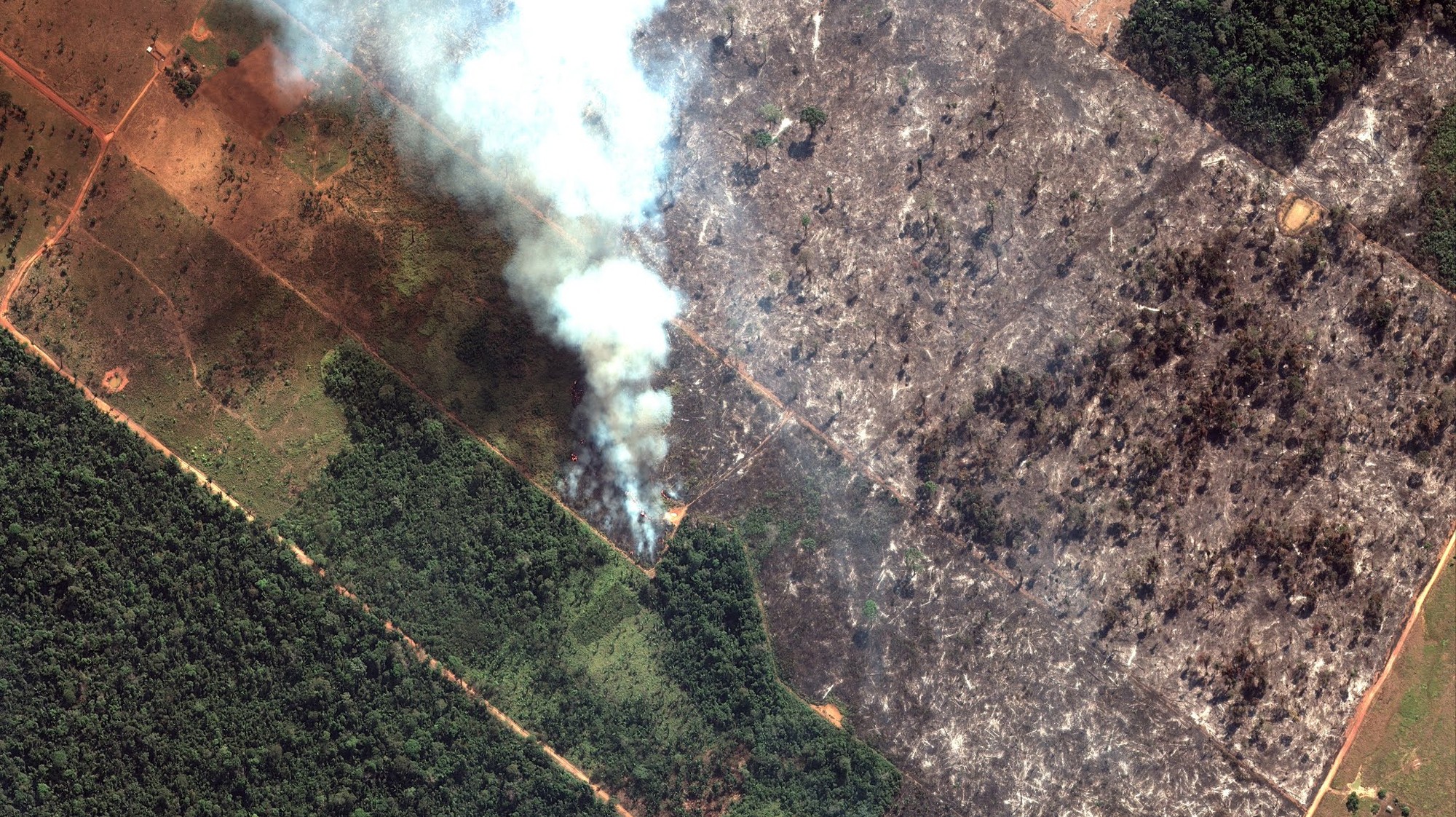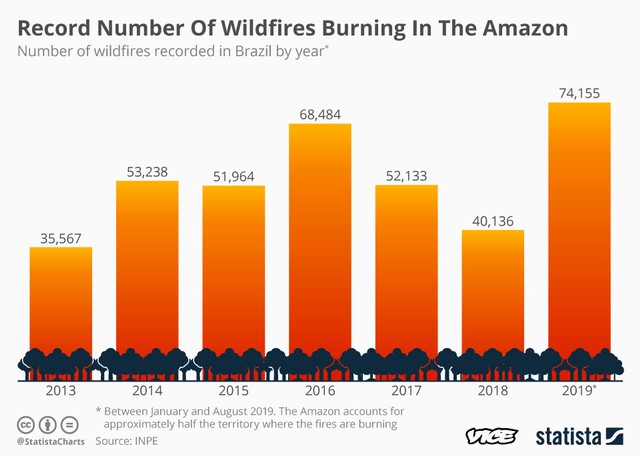The struggle with “Climate Despair” is real. That is anxiety and despair triggered
by news of environmental deprivation. Right now, for example, many have shared emotions
of helplessness among the ongoing forest fires in the Amazon. This calamity has
been going on for weeks, and the fires have become so bad that the state of
Amazonas declared a state of emergency this month.

The problem, though, is not completely
out of people’s hands. Studies have revealed that the fires are not initiated
by natural events, but by humans--our love for meat, to be exact.
The fires are triggered by
burning fallen trees to make way for livestock ranching, a developing industry
in Brazil and the wider region. Data from the Institute of Environmental Research in Amazonia (IPAM) reveals
that the top ten cities in Amazonia with the most fire incidences also had
the largest deforestation rates this year. The most real-world solution people
can adopt to help is to reduce--or stop--their meat intake.

Cameron Ellis, Senior
Geographer at The
Rainforest Foundation told VICE that since cattle need open spaces to
feed and grow, breeders clear vast lands by burning forests. These fires frequently
get out of hand and “escape into nearby forest, much of which is suffering from
famine.” The fires grow and end up consuming areas with trees that have not
been cut down.
Though logging (both legal
and illegal) and other activities also drive deforestation in the Amazon,
animal agriculture is the chief cause by far. The World Bank told that cattle ranching occupies 80% of all converted lands in the Amazon
rainforest.

But it does not end there.
The animals on these farms need to eat, and the World Wildlife Fund (WWF) also
links the rainforest fires to the production of cattle food through soy
farming. Soy is the most vital protein in animal feed, with 80% of the world’s soybean crop fed to livestock.
So while soy may not put an end to as much forest as cattle ranching, it is
part of the primary cause by permitting grazing.
All this is done to keep up
with the growing demand for meat globally, which is caused by population
growth and increased affluence in developing countries. This keeps
animal farms and soybean plantations locked in a vicious cycle where they
depend on each other to grow.
“The livestock and
agriculture sectors do not exist in isolation from each other. Rather, they are
linked in two primary ways: they act as mutual enablers to access land within
the Amazon, and they support each other through integrated value chains,” the WWF said.
It does not help that the present
rhetoric of the Brazilian government favors, incentivizing. Up
to 80% of deforestation in the Amazon is illegal, though. The
Amazon is now one of the major cattle ranching regions in the world, and it’s only
getting worse. Brazil’s cattle herd grew from 158 million heads in 1996 to 219 million in 2016, becoming the world’s biggest
beef and poultry exporter.
Last year, Brazil shipped 1.6 million tonnes of beef, the maximum in history,
Reuters reported. The number is projected to grow 1.8 million tonnes by the end
of 2019, with China as the main export target. Other major importers of Brazilian beef are Hong Kong,
Egypt, Russia, and the European Union. Ellis told VICE that less rain is
falling now since there are less forests to capture it. If the deforestation
cycle is kept alive, we might reach a “tipping point where the complete
landscape changes from rainforest to savanna,” he said.
One person not eating beef
for a year saves roughly 3,432 trees, so you are doing the earth a favor
by avoiding that burger.













No comments